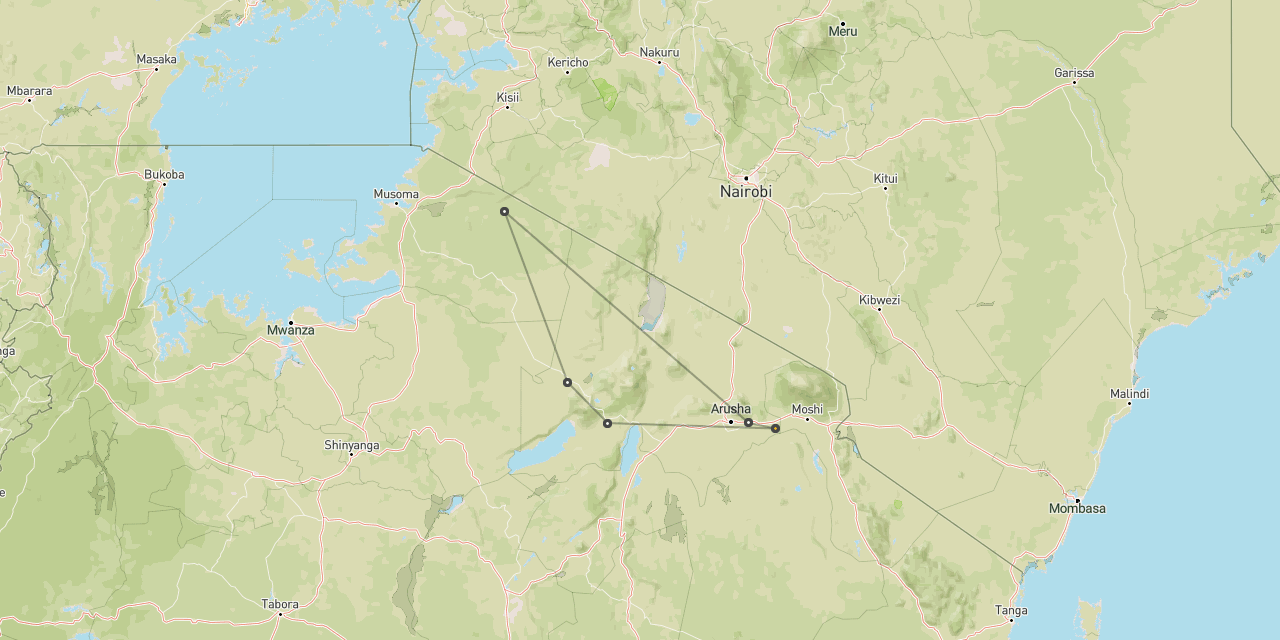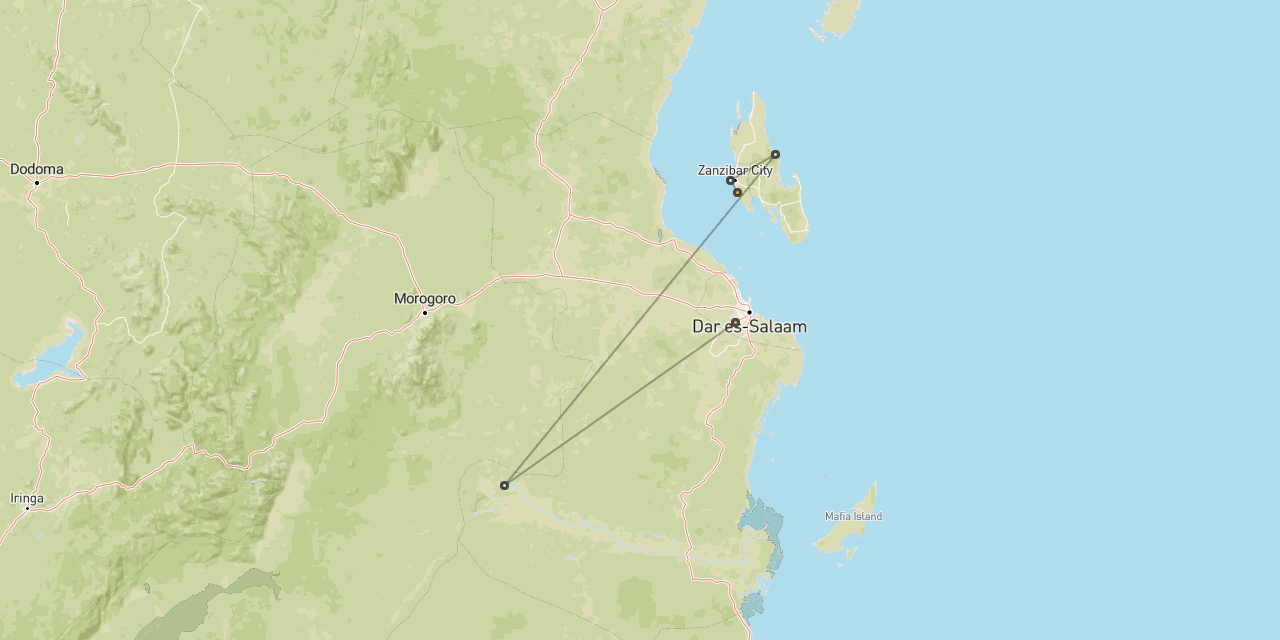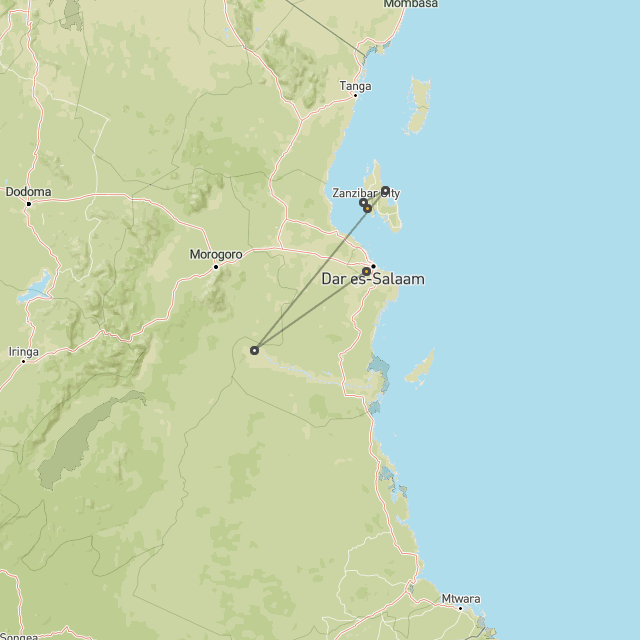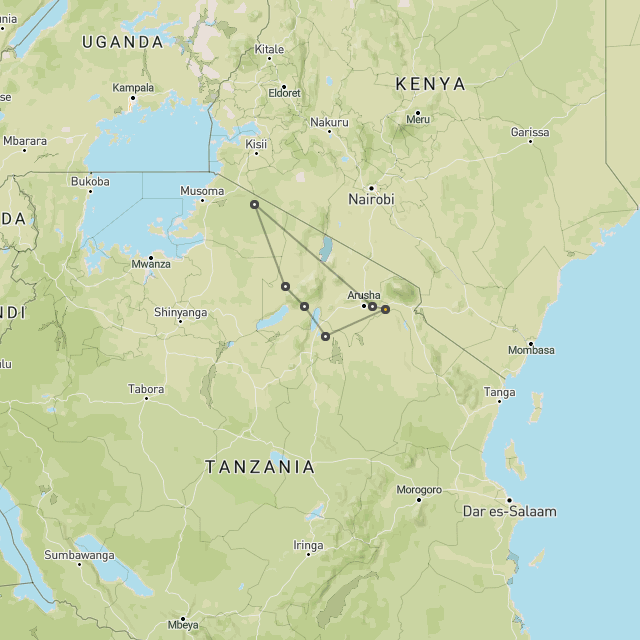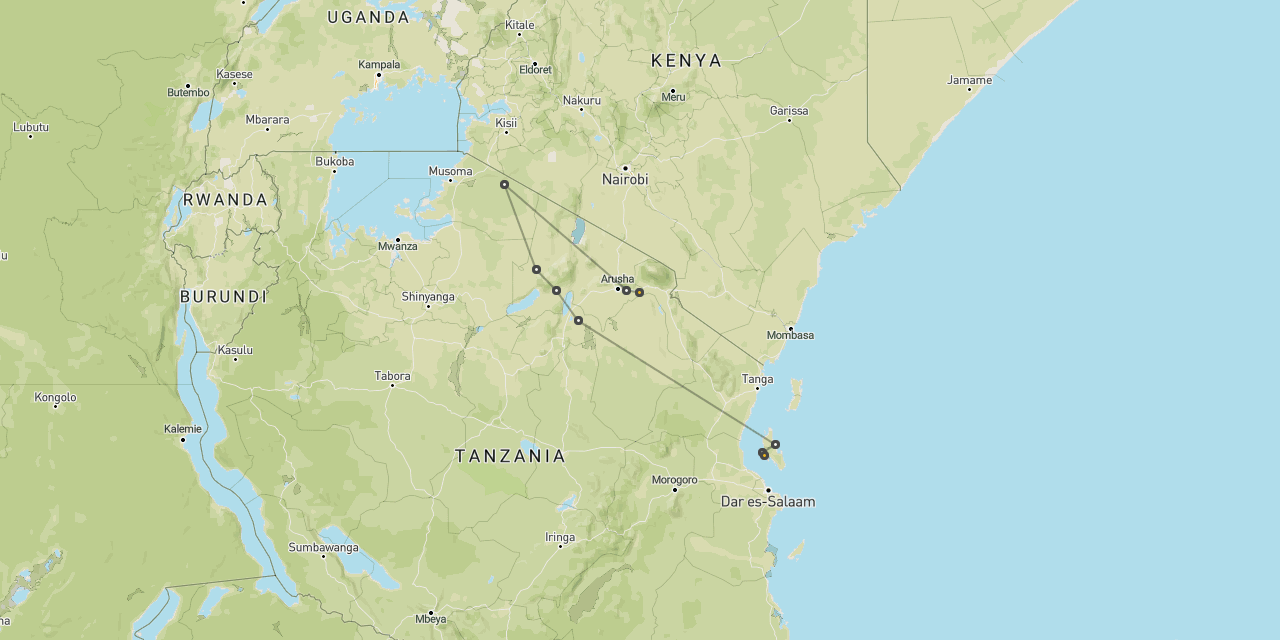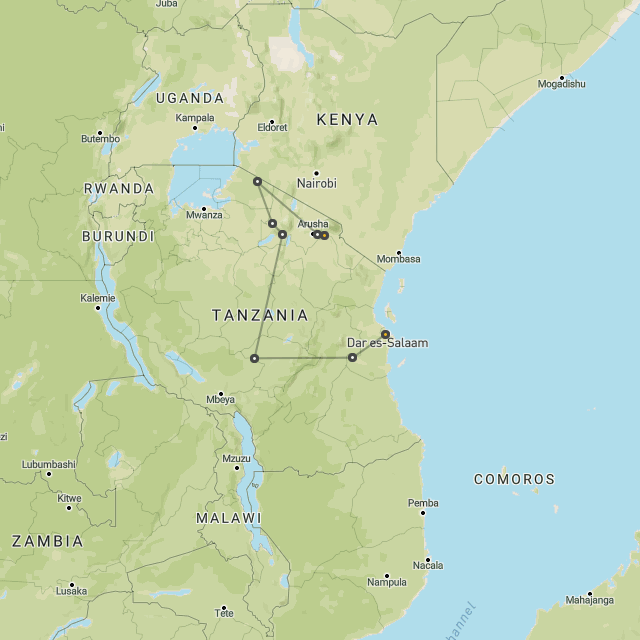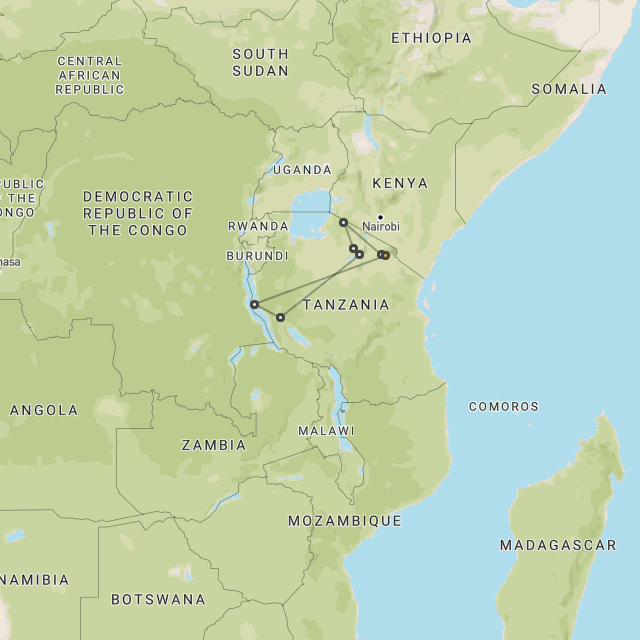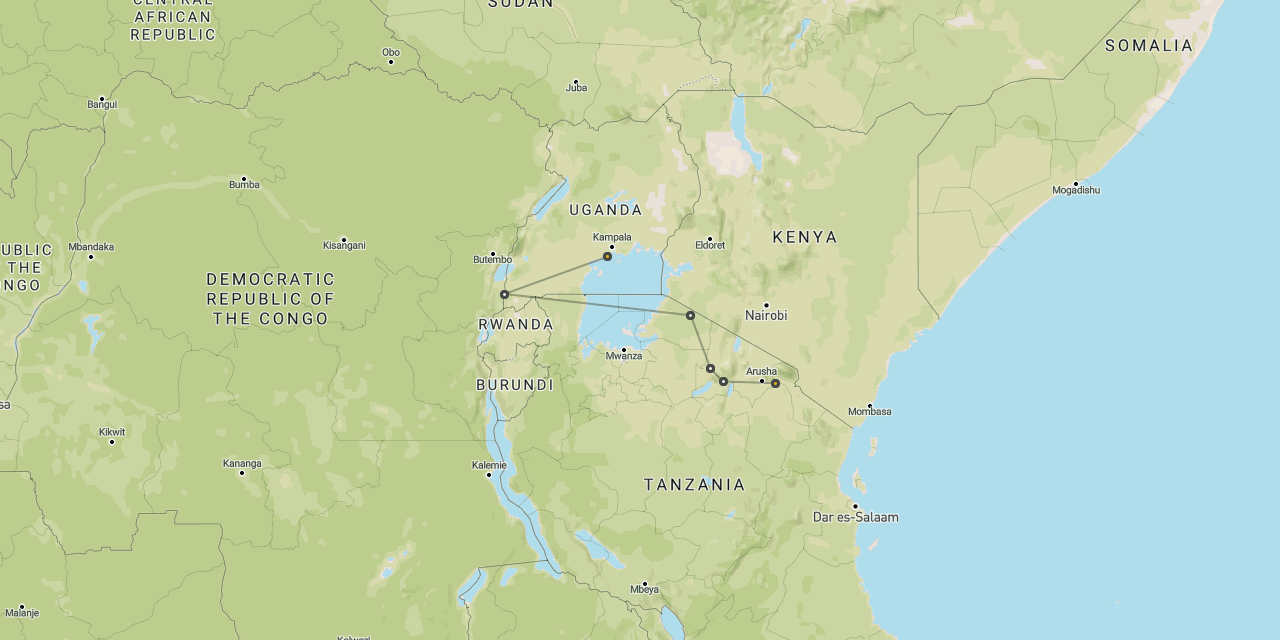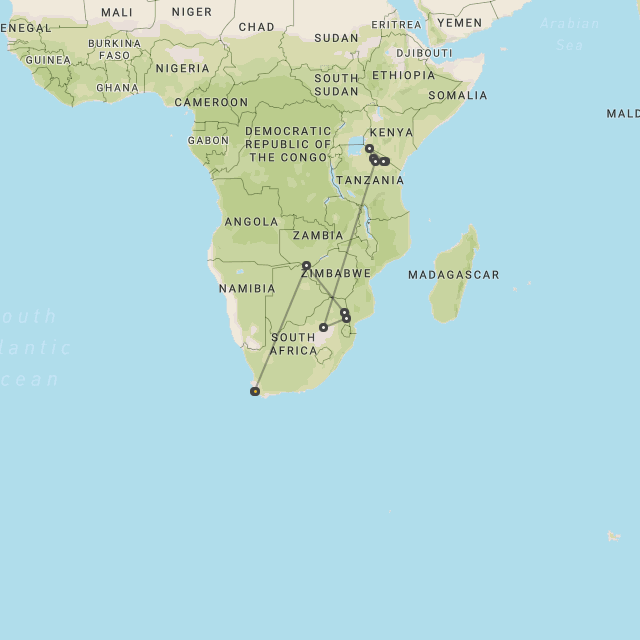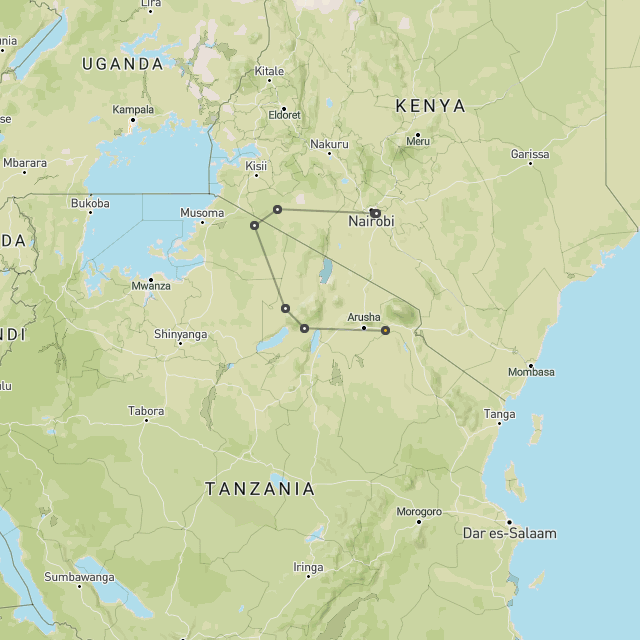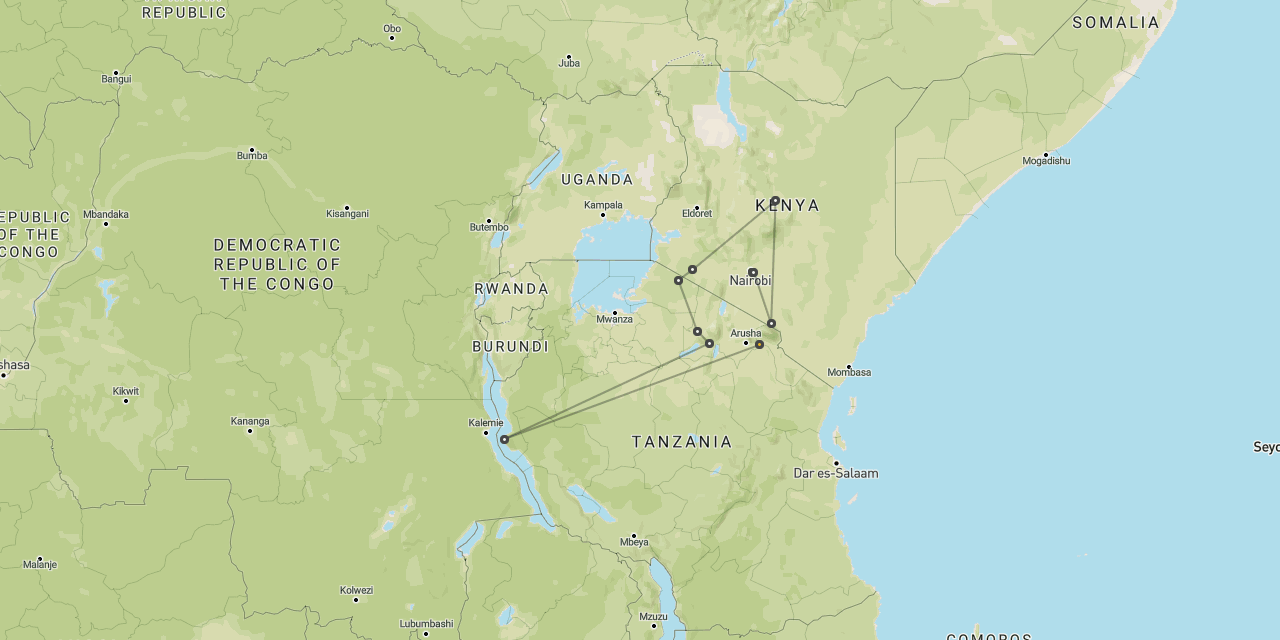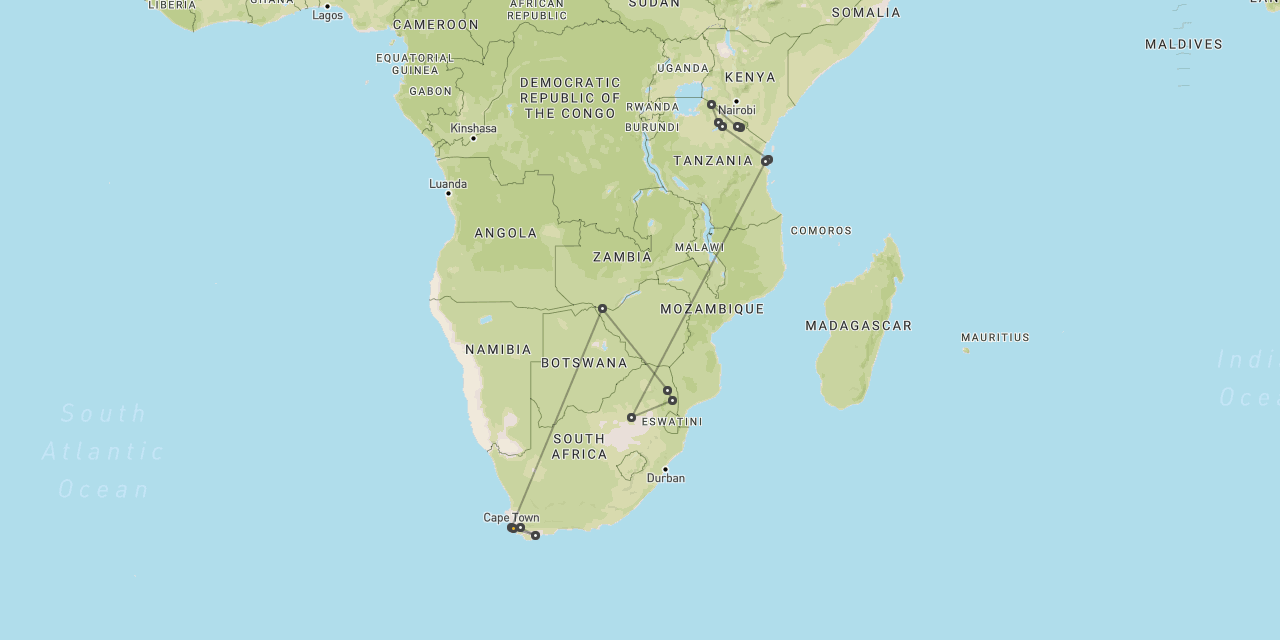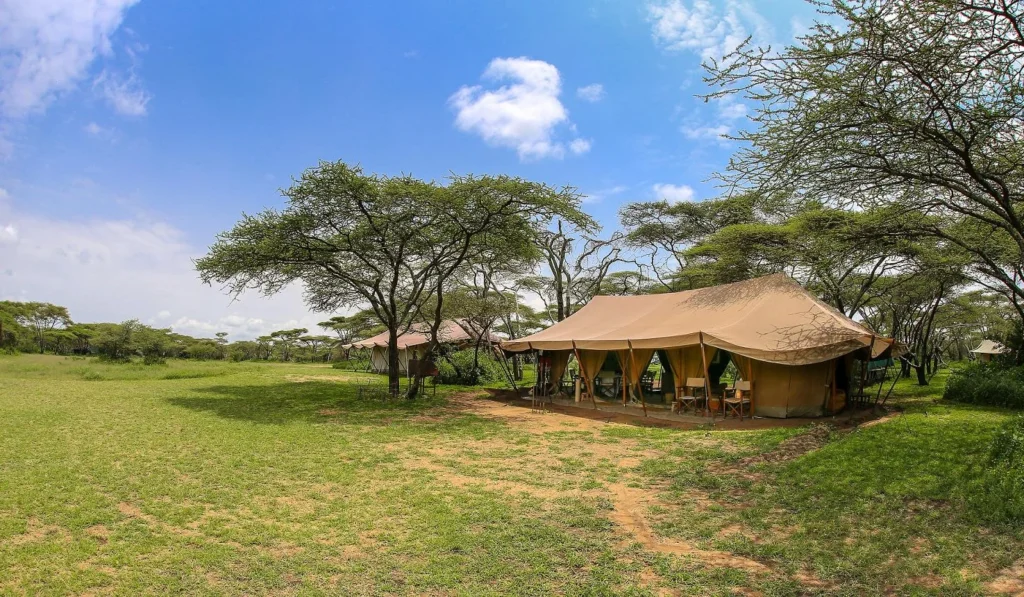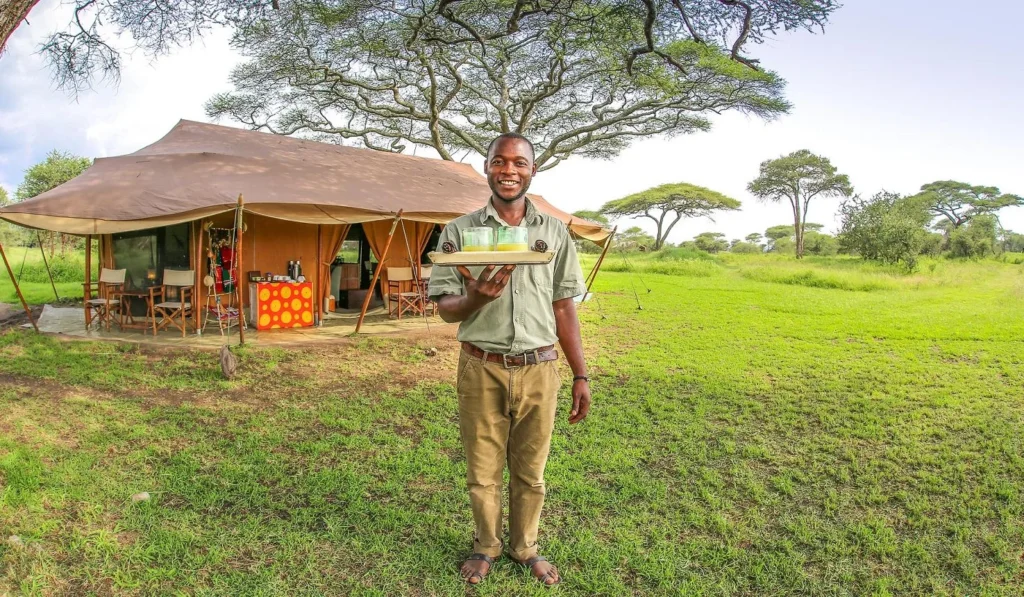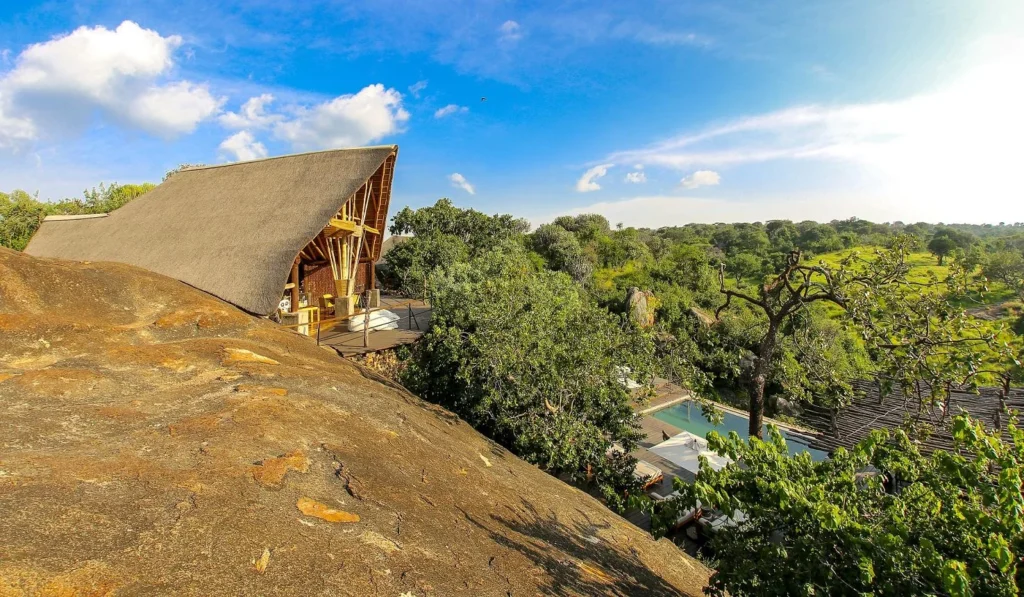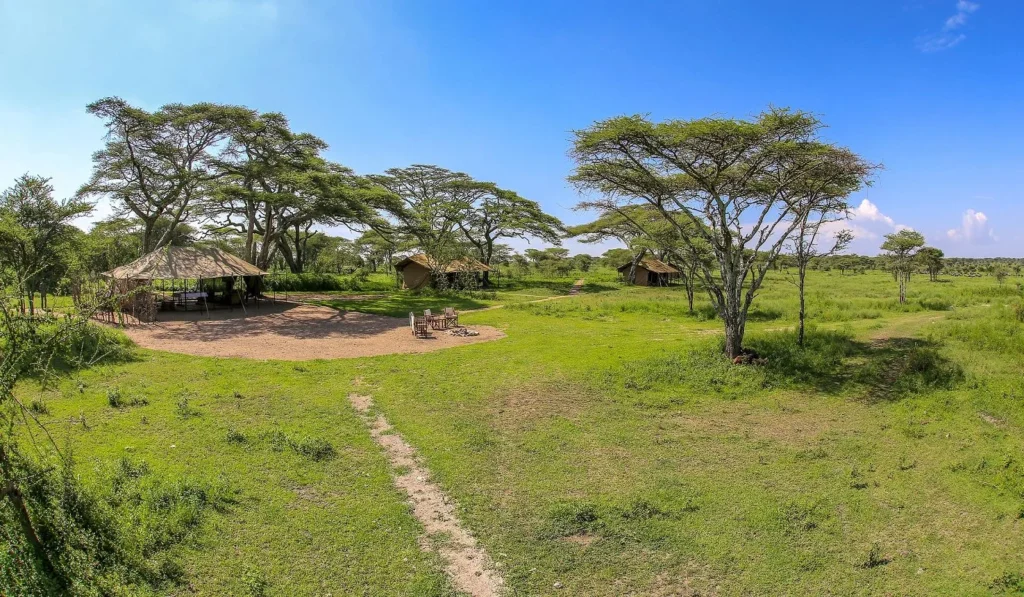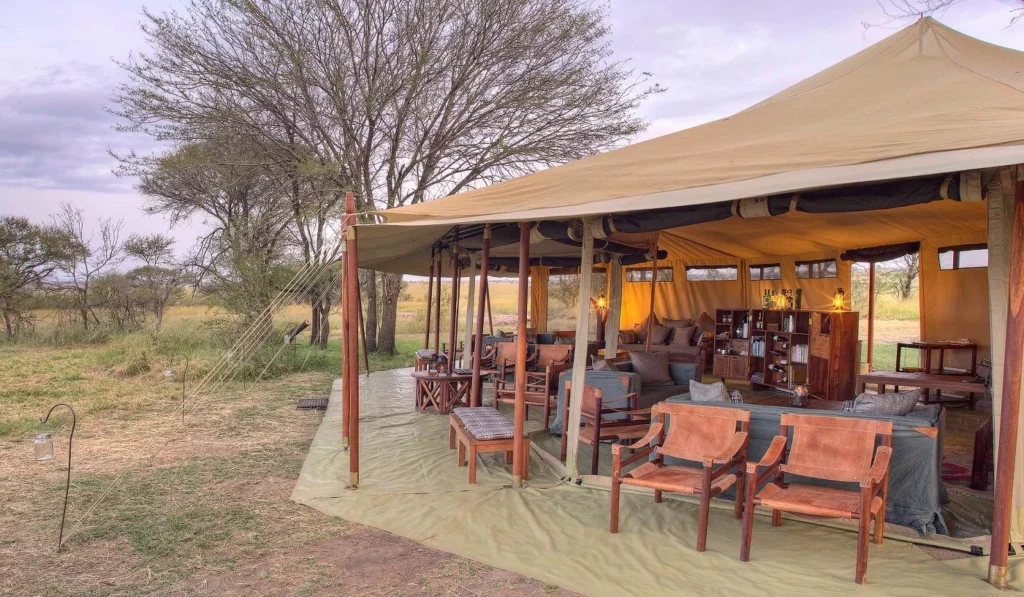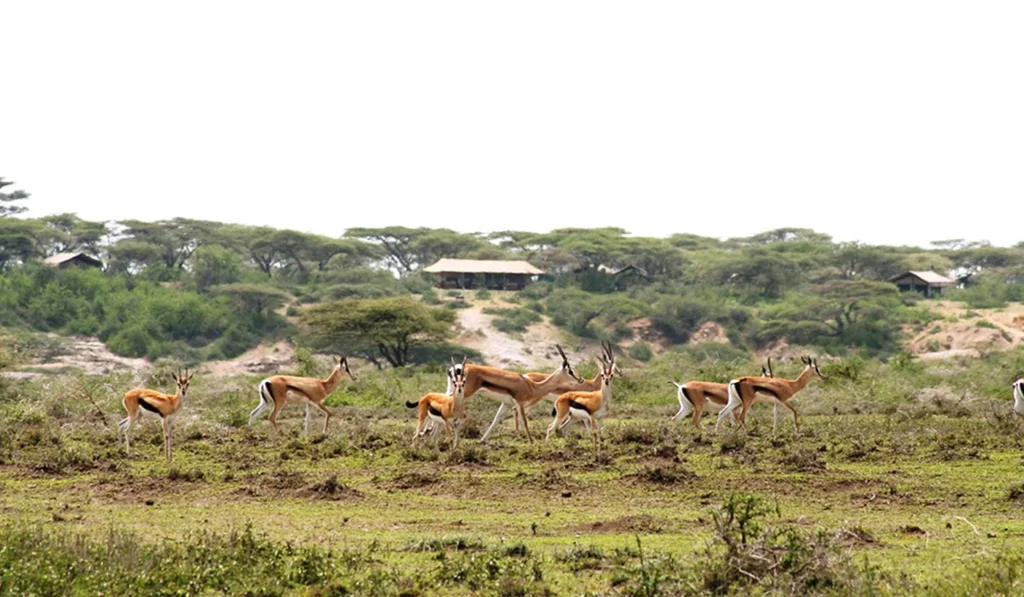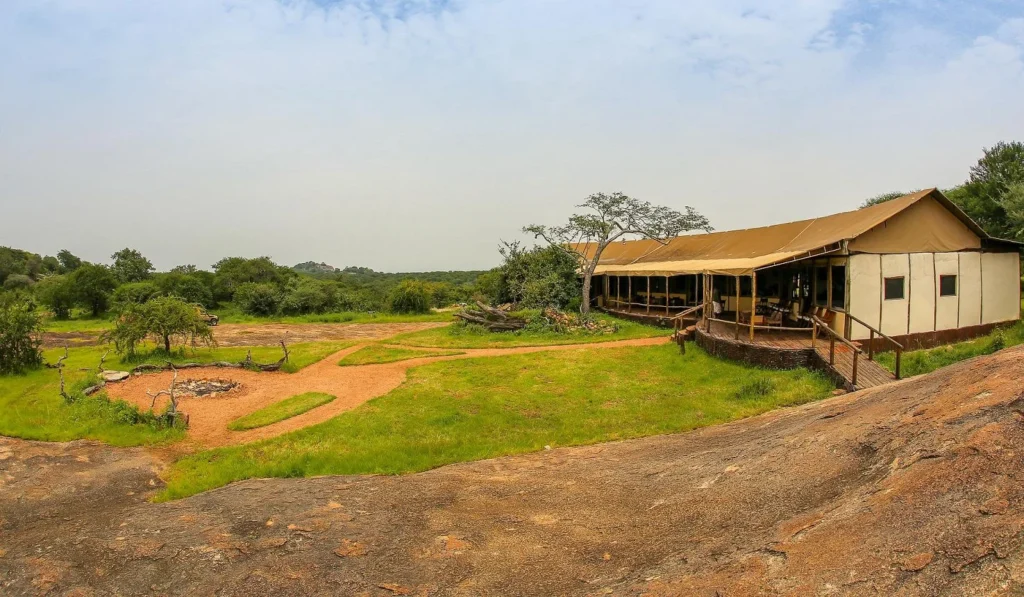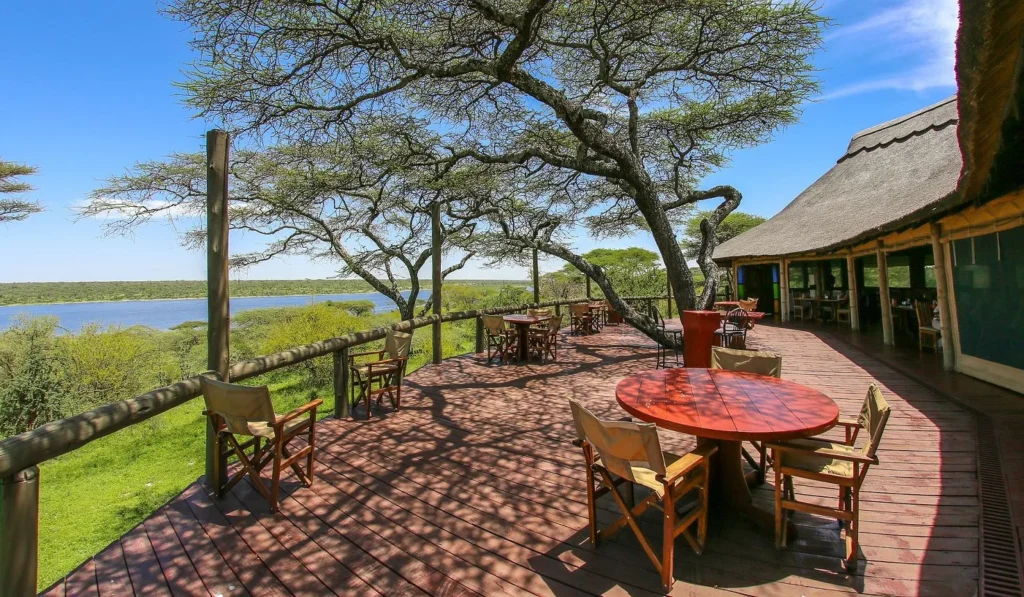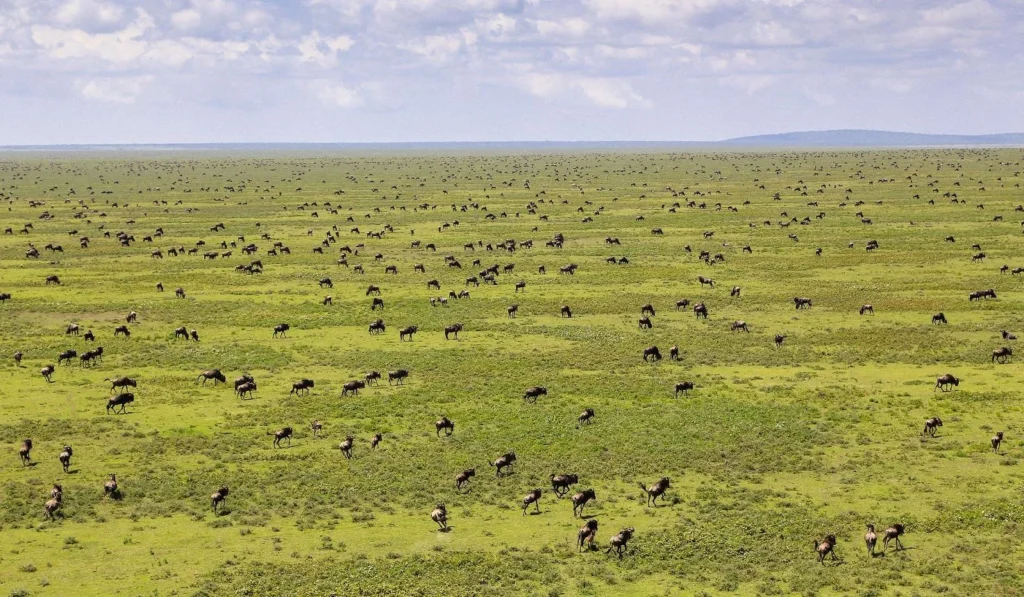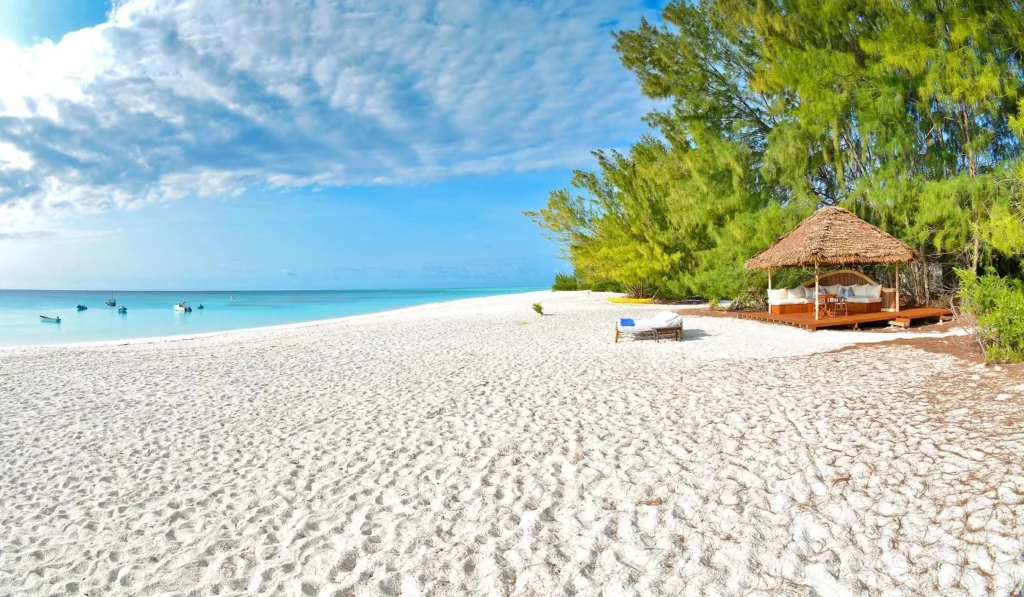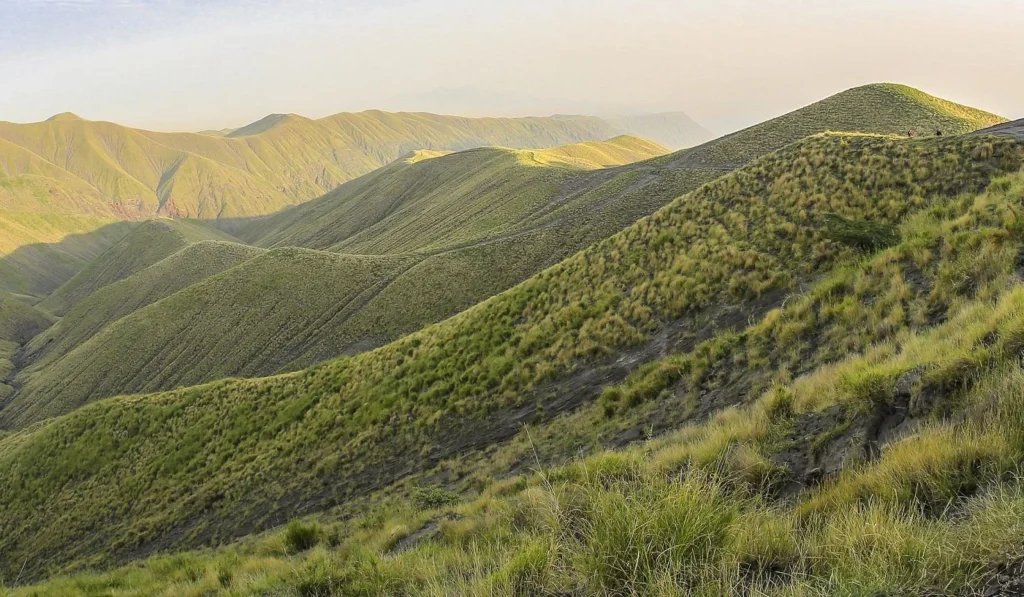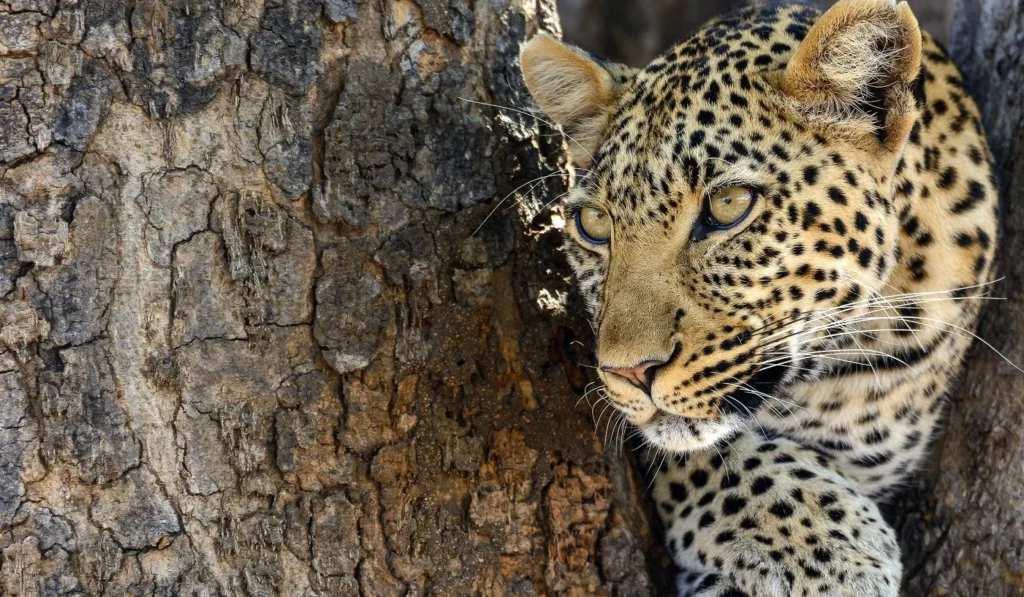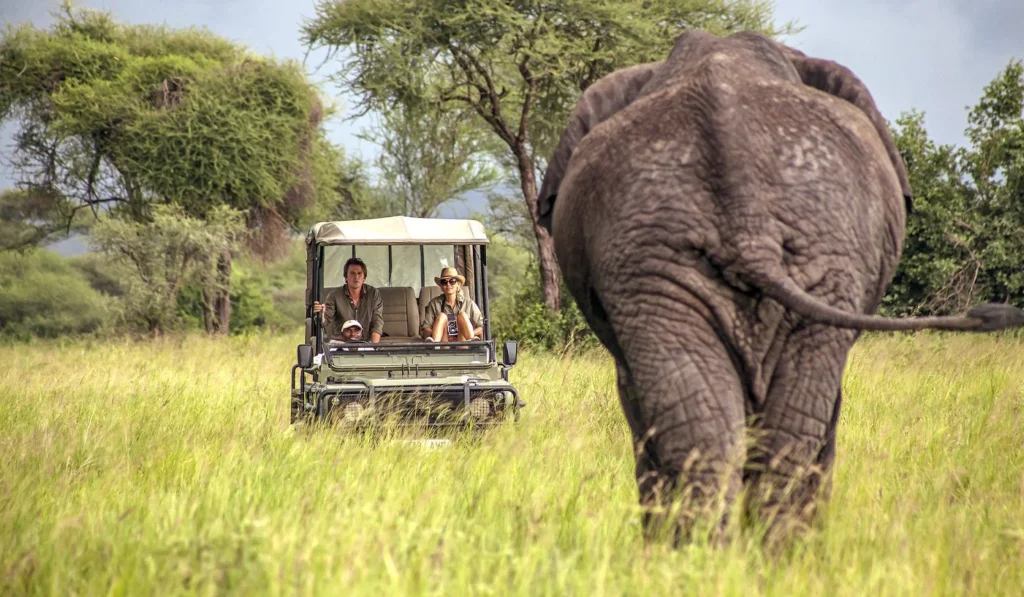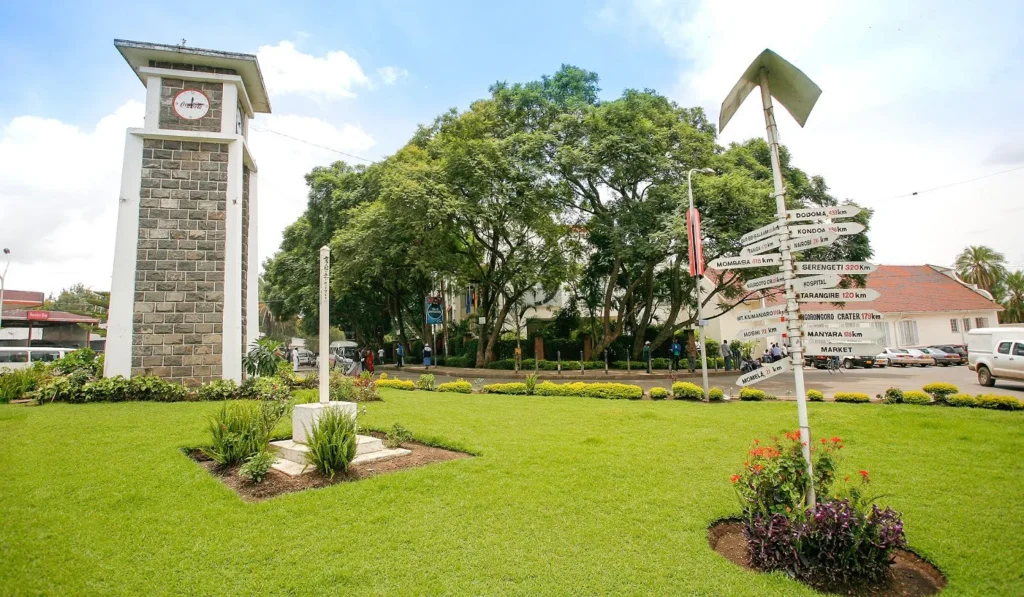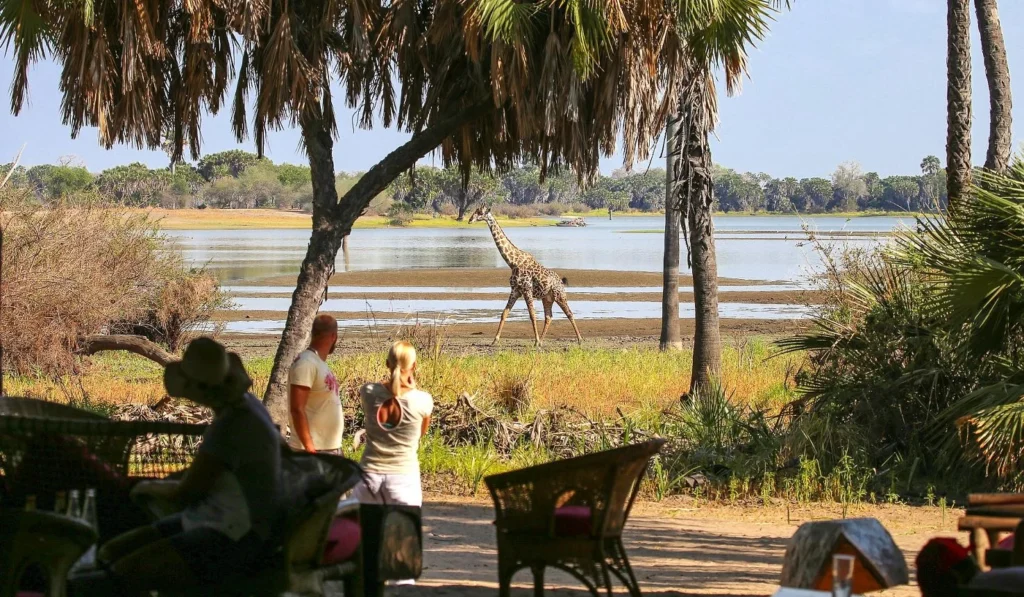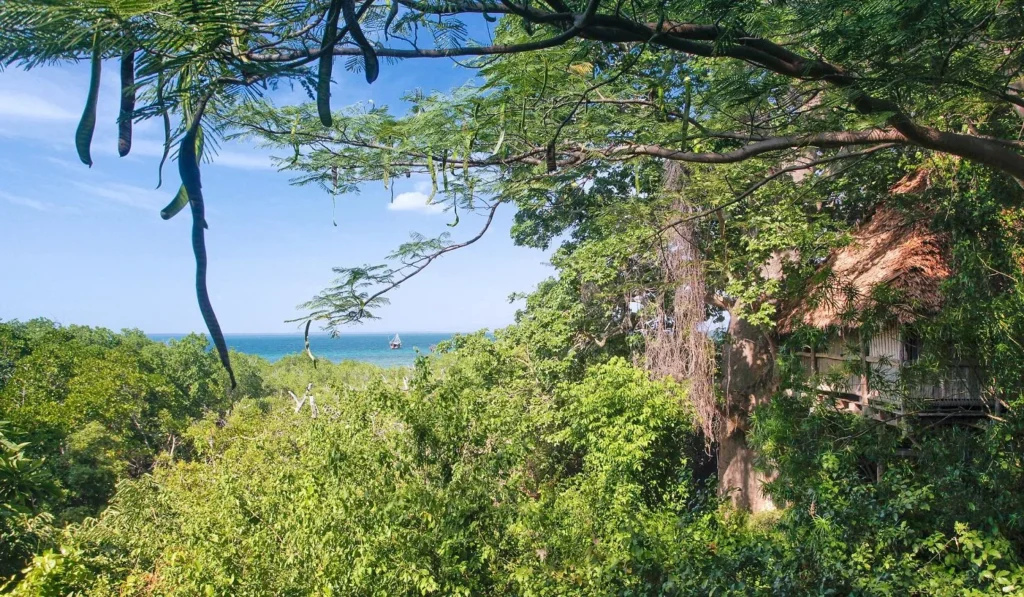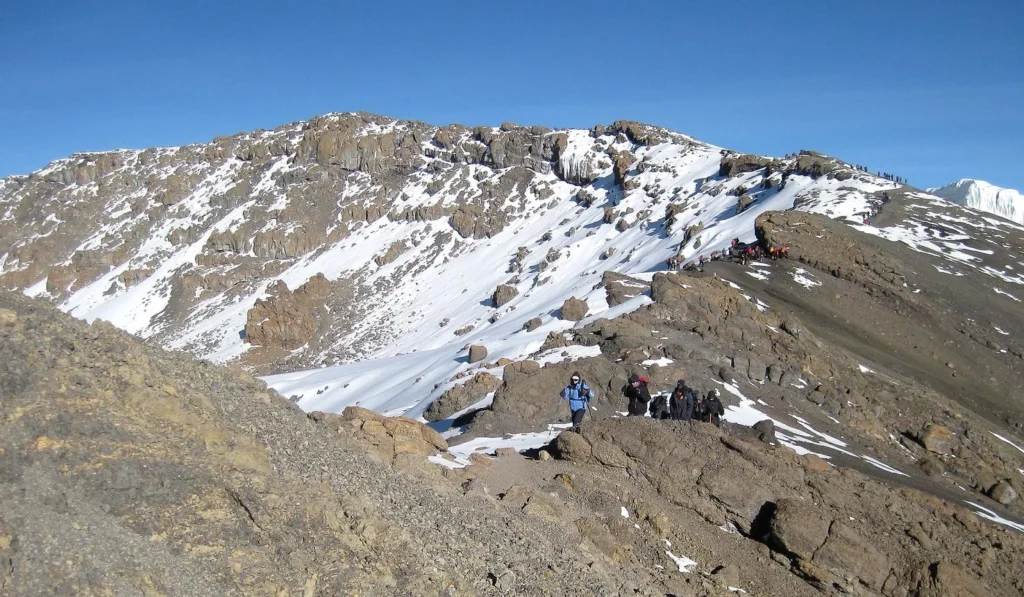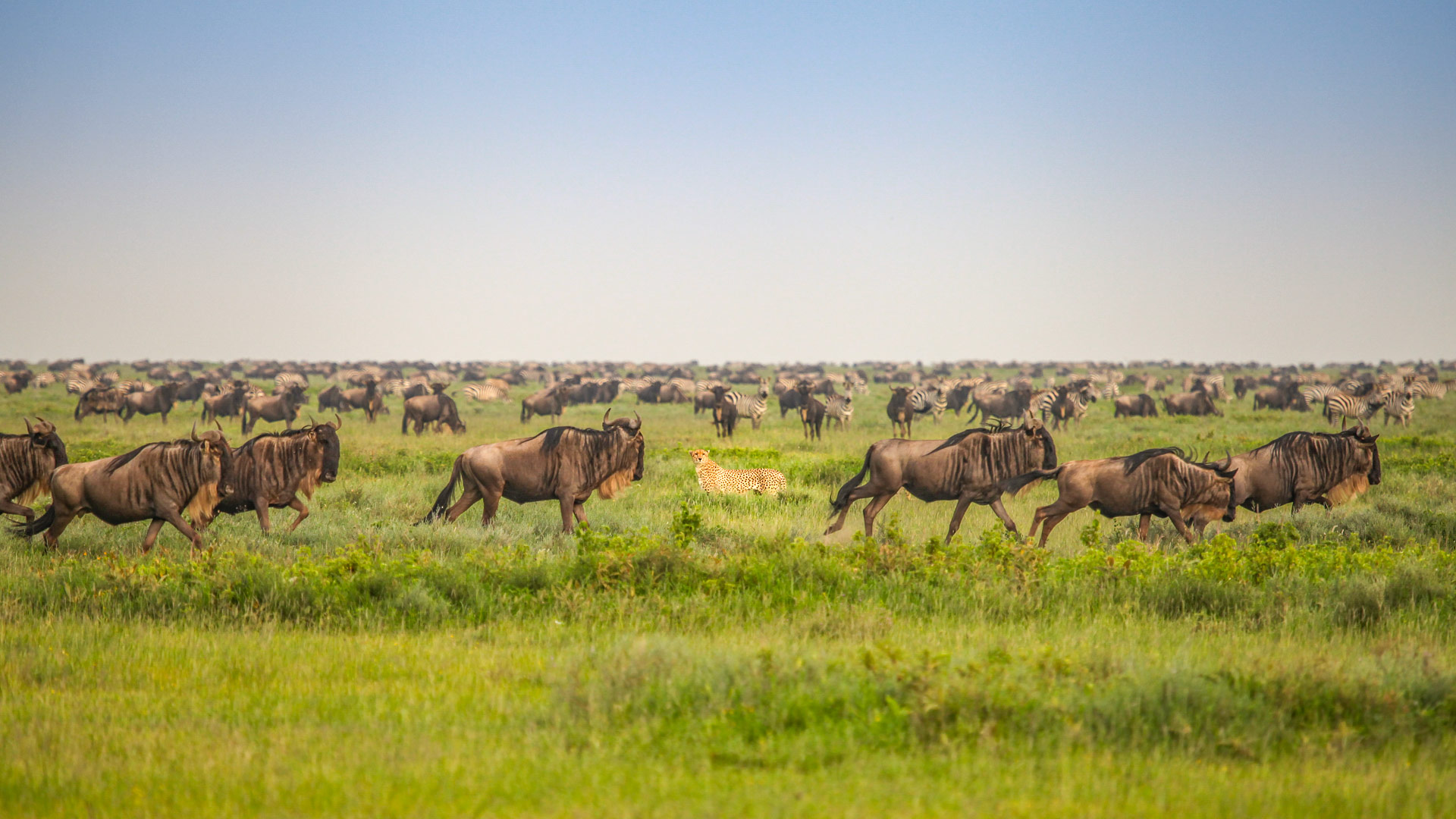
Safari to Serengeti Southwest
Serengeti Southwest
is the epicentre for
migration calving Dec-Apr
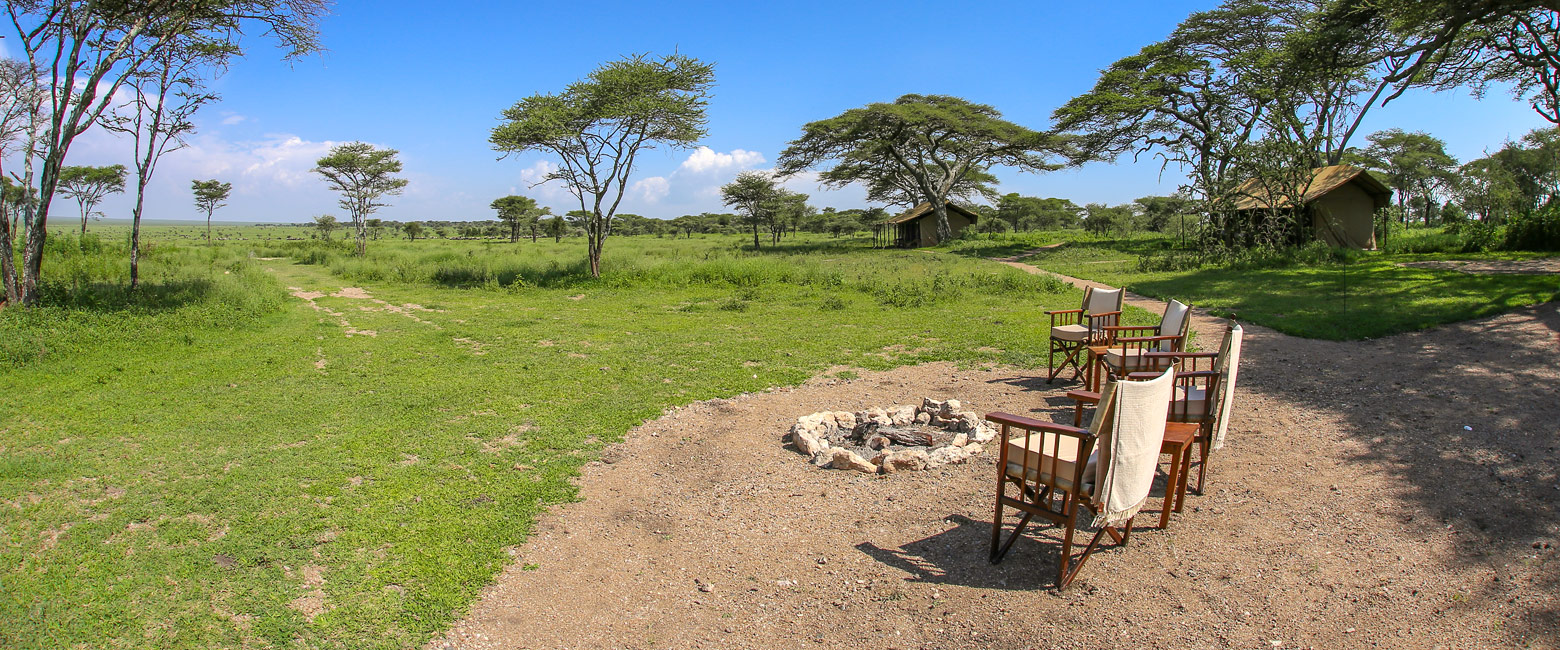
important to get into the more remote camps
Serengeti Southwest is one of the most important and most visited parts of the greater Serengeti region.
The area contains substantial tracts of the critical short-grass plains, the lakes and forests of the Ndutu area and the mixed terrain of the remote southwest corner of the reserve and adjoining private safari areas.
It’s here that, usually Dec-Apr, almost half a million female wildebeest choose to calve, which is generally considered to be one of the greatest of all wildlife spectacles.
Because this area is largely outside the Serengeti National Park, off-road driving and walking are both possible, meaning that the better operators have the freedom to offer unusually involving and authentic safari experiences.
However it’s worth noting that the Dec-Mar peak migration season is usually accompanied by a significant amount of rain and that there can be considerable vehicle traffic around the core Ndutu area, which ideally needs to be avoided.
During the converse Apr-Nov period Serengeti Southwest becomes a fabulously peaceful backwater where you can go for days without seeing another soul and where there’s usually some decent resident wildlife, especially around the lake areas.
Wildebeest migration
Of course the Serengeti is best known for its enormous wildebeest and zebra migration, in which close on 2.5 million herbivores munch their way along an 800 km route around the greater area, driven by the continuous search for drinking water and the quality of grazing.
The main body of the migration is formed by around 1.7 million wildebeest, who are rather dull-headed creatures. It’s the 500,000 zebras who appear to be the main decision makers in terms of routes and timings.
The migration is accessible for most of the year, although you do have to plan your safari to be in the right places at the right times.
The Serengeti Southwest area usually hosts the migration during the Dec-Apr, when almost half a million female wildebeest choose to calve. This is generally considered to be one of the greatest of all wildlife spectacles. The tender wonders of new life are contrasted by the harsh realities of predator versus prey. The whole epic battle really is something to behold.
The Ndutu area tends to be central to these events because it lies at the border between the short-grass and long-grass plains, an area where the migration herds tend to linger between alternating periods of rain and dry. There are also several lakes in the Ndutu area, all of which means that the movement of the herds tends to be a good deal less transient here than in most areas.
To the west and south of Ndutu lie the Kusini and Kakessio areas, largely comprised of open plains which are considerably more remote but where the migration action tends to be more sporadic.
Resident wildlife
The Serengeti Southwest area is generally not very favourable for wildlife during the long Jun-Oct dry season, so most of the wildlife is migratory to some extent.
Those animals which do not form part of the main migration tend to move in towards the permanent lakes in the Ndutu area during this period. The extensive acacia forests of this area also help to sustain the animals.
As a result there is usually a reasonable range of resident wildlife to find year round, notably including good populations of giraffes and elephants, as well as good numbers of lions, cheetahs and spotted hyenas.
Visiting this area during the migration season is a no-brainer. Visiting during the converse season is a more complicated decision. Certainly there will be very few vehicles around and there should be a reasonable range of wildlife, but the place can feel very arid and dusty. We find it fascinating, but it’s certainly not for everyone.
Traffic avoidance
In Serengeti Southwest the visitor traffic should only be an issue during the first part of the migration season, from mid-December to mid-March.
The main congestion takes place around Ndutu, especially at the airstrip, but also in the safari areas around the lakes. There’s so many camps in this area these days, it’s really not ideal.
For this reason we usually try to recommend camps in the more remote Kusini, Kakessio and Maswa areas further south and west, which can be blissfully peaceful.
As always, it’s very much up to you to make it clear to your guide quite how important avoiding other vehicles is to you.
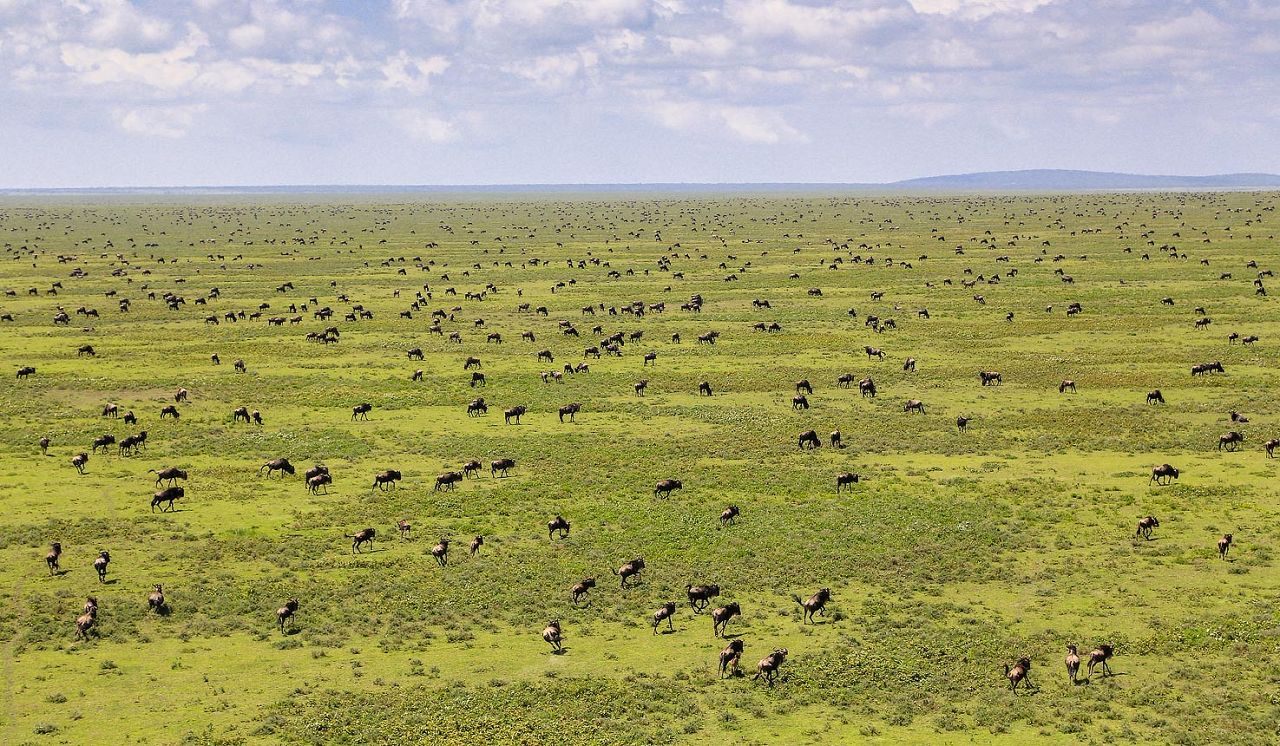
Gallery
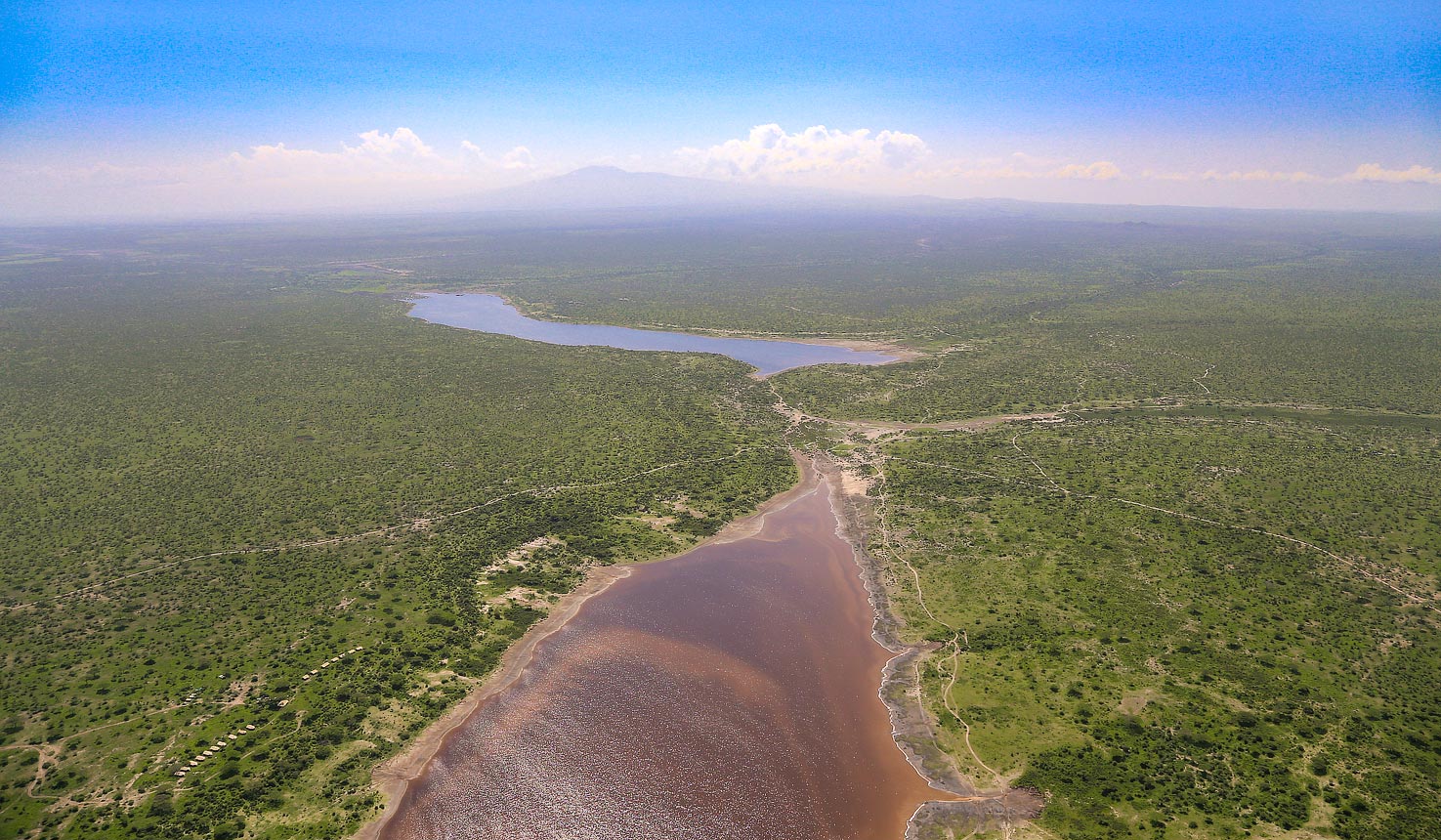
Video
Map
Serengeti Southwest tends to feature in a very high proportion of trips during the Dec-Mar migration calving season, when it is the epicentre for wildlife viewing.
We also like to include it during the converse May-Nov dry season, when visitor numbers are very low, but there is still good resident wildlife in some areas.
Getting around
The majority of people visiting Serengeti Southwest do so as part of a guided overland safari, so they travel to their camp and around the area in their private vehicle.
A few people visit Serengeti Southwest in isolation, flying in and out of the airstrip at Ndutu. In this case they travel around the reserve with a vehicle and guide from their camp.
Where to stay
Trying to decide where to stay in Serengeti Southwest can be a little bit complicated.
During the migration season it’s usually best to avoid the core Ndutu area (especially during February) due to high visitor traffic, but in reality the further removed you get, the more expensive the camps become. So there may be some element of compromise needed.
Our favourite option (although maybe a little bit niche) is probably Serian Kakessio Camp, which is wonderfully tucked away to the southwest.
The Kusini area is closer to Ndutu, but still has a pleasantly remote feel and has some great accommodation options, including Kimondo Kusini Camp, Serian Kusini Camp, Ubuntu Kusini Camp and Sanctuary Kusini Camp.
The private Maswa area further to the west has some extremely high-end options including the substantial and very luxurious Legendary Mwiba Lodge.
In the Ndutu area there are some pretty good tented options, including Olakira Ndutu Camp and Nomad Masek Camp, as well as some permanent lodge options including the original Ndutu Lodge (which is something of an institution) and the similarly well-priced Lake Masek Tented Lodge.
the greatest wildlife spectacle on Earth
Further reading
- Safari in Serengeti
- The best ways to experience the Serengeti migration
- The best balloon safari in Serengeti
- The best ways to avoid traffic in Serengeti
- The best time of year for safari in Serengeti
- The best locations for safari in Serengeti
- Safari in Serengeti Central
- Safari in Serengeti Grumeti
- Safari in Serengeti Mara
- Safari in Serengeti North
- Safari in Serengeti Southcentral
- Safari in Serengeti Southeast
- Safari in Serengeti West
let us know your thoughts about Tanzania
and we will help you create the perfect safari
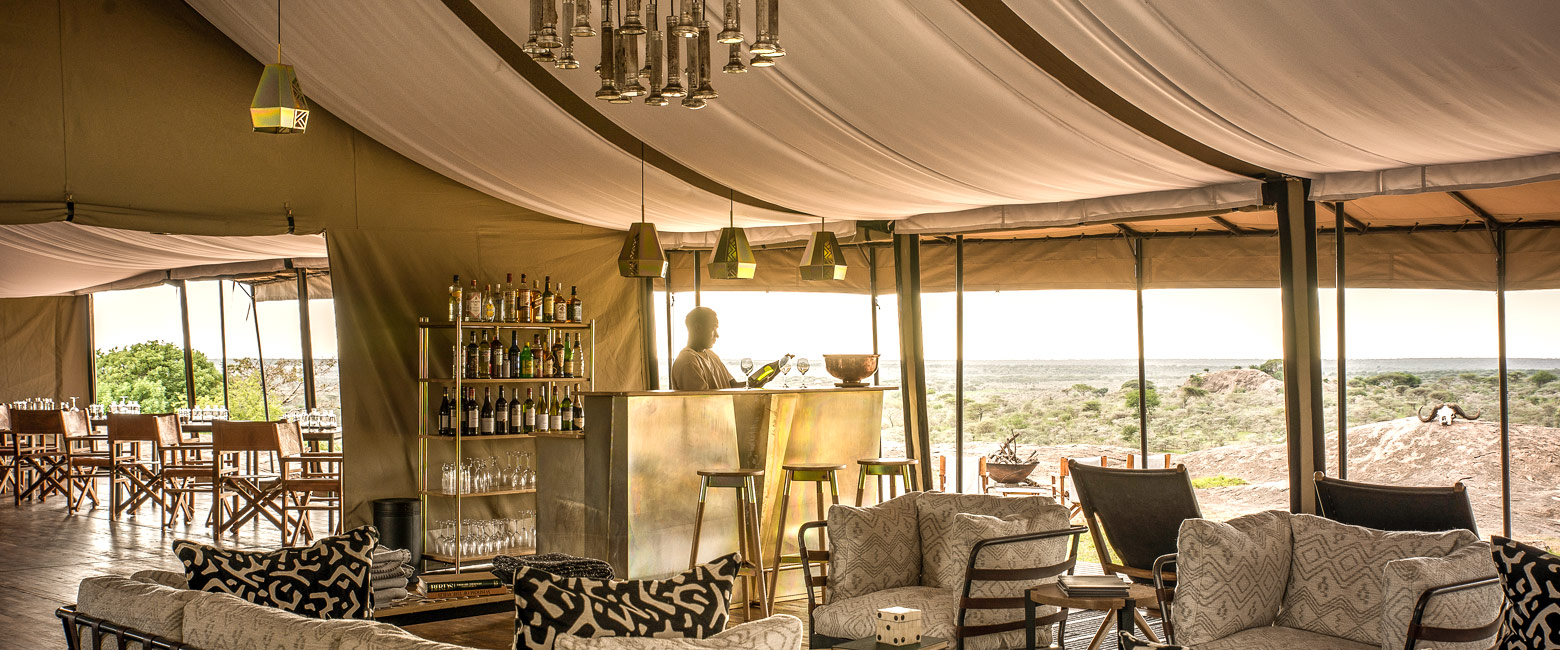
Extraordinary tailor-made adventures,
from earthy and edgy to easy and extravagant
From around USD 2500 per person, you set the ceiling
Sample Trips
Here are some of our popular trip shapes
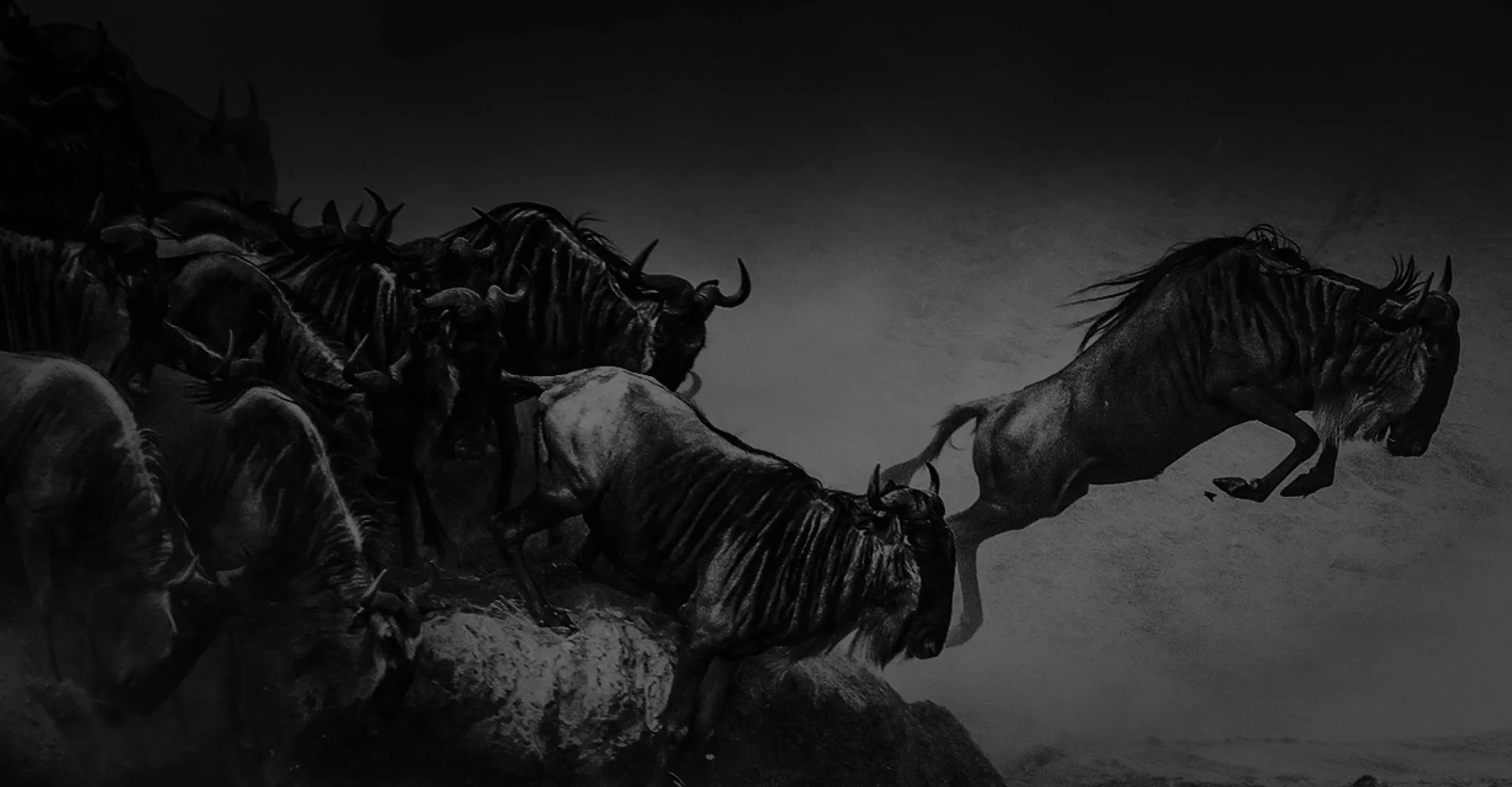
Get started on your trip
It’s never too soon to get in touch, we are here to help with every stage of your planning.
Best Lodges
We regularly inspect and photograph all of the the best lodges, to ensure that we always recommend the most suitable options
Key Locations
Take a look around related locations. Click ‘View more’ to explore locations further afield.
Where Next?
Where Next?
We offer trips to dozens of fabulous countries.
Might one of these might be your next great adventure?

Please rotate your screen.































